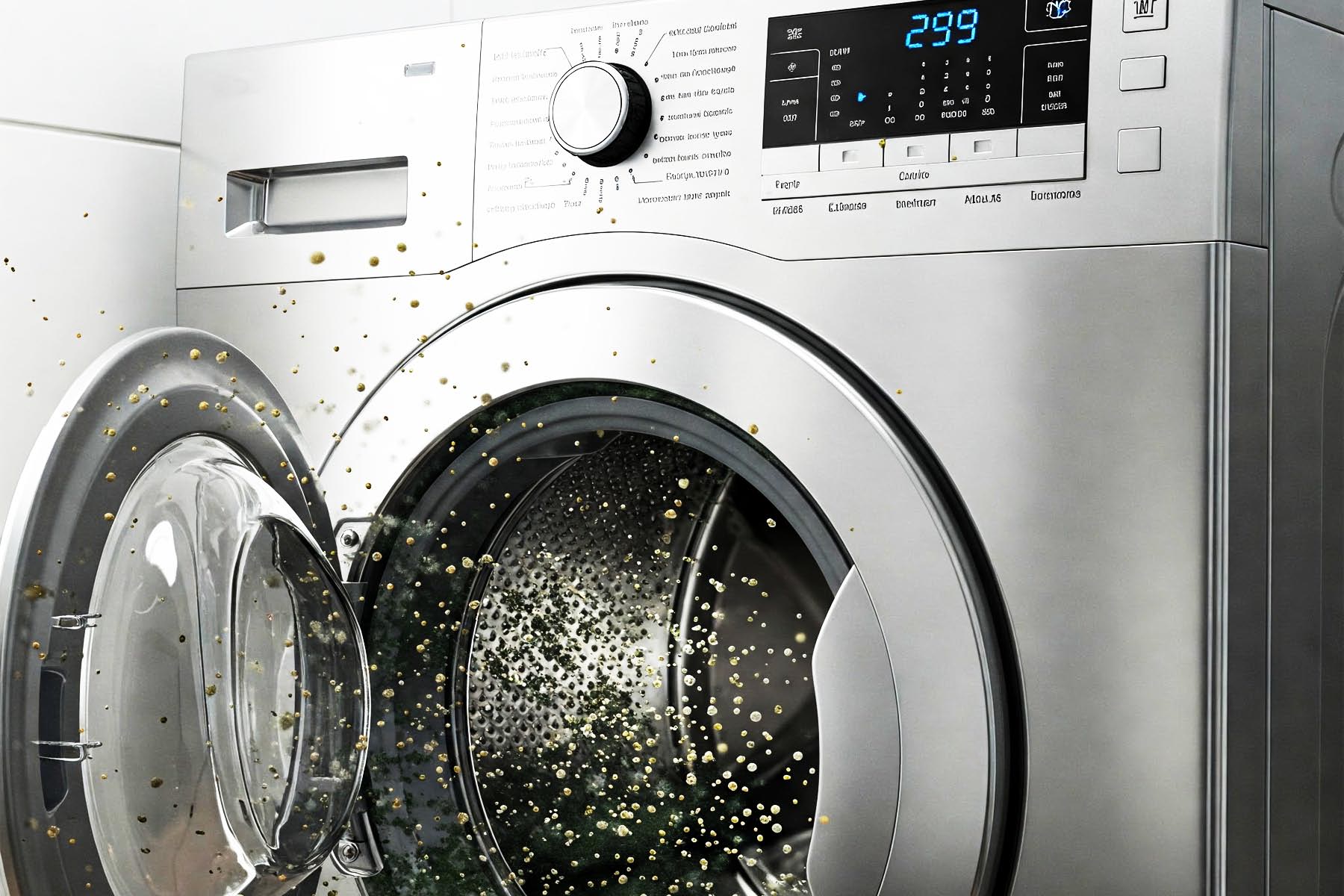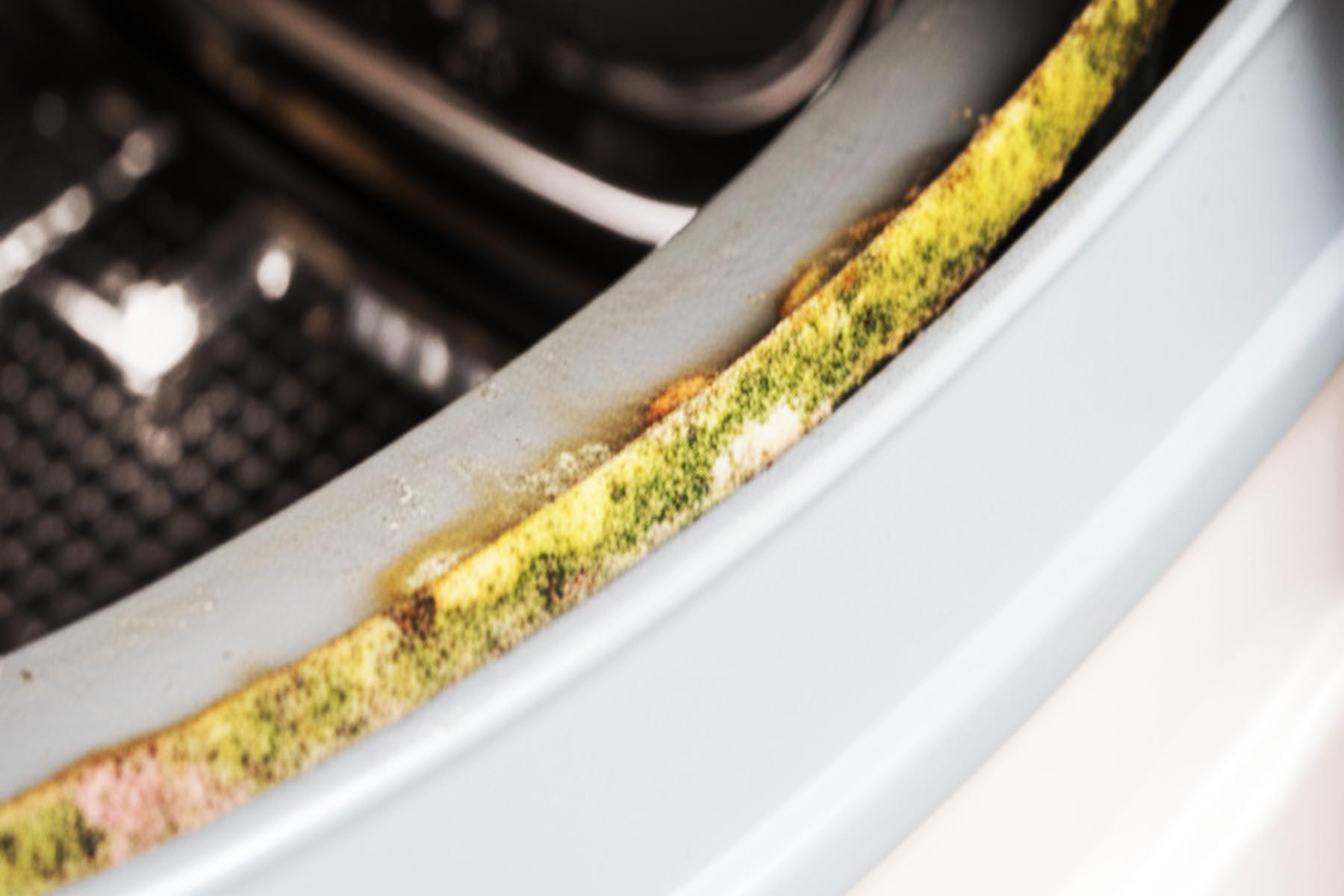
Spoiler: It’s More Than Just Soap Scum
Your washing machine is the unsung workhorse of your home, sanitizing loads of laundry with each cycle. But while it’s cleaning your clothes, it’s also accumulating hidden contaminants — and without regular maintenance, your appliance can become a microbial hazard and a mechanical liability.
Below, we’ll examine what really happens when the “Clean Washer” cycle is neglected — and how that affects your laundry quality, your health, and the lifespan of your machine.
🦠 Act 1: The Build-Up — Formation of Biofilm and Residue Layers
Even in high-efficiency (HE) washers, residual materials are deposited during each wash cycle. These include:
Surfactant residues (from detergent)
Organic matter (skin cells, body oils, food particles)
Microplastics and textile fibers
Mineral scale (especially in hard water regions)
These materials accumulate in:
Rubber door gaskets (especially in front-load models)
Detergent drawers
Drain pumps and hoses
The inner stainless steel and plastic tub assemblies
Over time, this matrix forms biofilm — a microbial layer composed of bacteria, mold, and fungi embedded in a protective extracellular polymeric substance (EPS). Biofilms are hydrophobic and adhesive, making them resistant to detergents and even mild disinfectants.
🧫 Act 2: Mold Proliferation and Airborne Spore Risk
Mold spores, particularly from species like Aspergillus and Cladosporium, thrive in damp, warm environments — and modern washing machines provide exactly that. When the biofilm is left unchecked:
Mold colonies establish themselves in dark, moist crevices such as door gaskets and vent channels.
Spores are released during the wash, especially in hot, humid post-cycle environments.
Airborne contamination becomes a real concern in laundry rooms, potentially aggravating respiratory conditions like asthma.
Signs of mold include:
Musty odors from the drum
Black or brown streaks near the door seal
Visible mold on detergent trays
💩 Act 3: Fecal Contaminants and Cross-Laundry Contamination
Studies have shown that a single pair of underwear can carry trace amounts of fecal matter — approximately 0.1 grams per garment, per research published in The Journal of Applied Microbiology. This introduces Enterobacteriaceae and other coliform bacteria into your wash water.
Key facts:
Cold-water washes (<90°F or <32°C) do not effectively inactivate these pathogens.
Without routine clean cycles, microbial contamination is transferred to subsequent loads.
Cross-contamination is likely, especially if towels, baby clothes, and undergarments are washed sequentially.
🔧 Act 4: Performance Degradation and Mechanical Wear
Neglecting the clean cycle impacts more than just cleanliness — it gradually undermines the machine’s operational efficiency and accelerates mechanical wear:
| Component | Common Issue Due to Neglect |
|---|---|
| Drain Pump & Filter | Clogs from lint, hair, and biofilm sludge |
| Pressure Sensor | Faulty readings due to detergent and scale buildup |
| Heating Element | Efficiency loss from mineral scaling |
| Drum & Tub Assembly | Coated with residue, reducing mechanical agitation |
| Door Gasket | Mold degradation leads to leaks and odor retention |
Operational symptoms include:
Prolonged wash times
Incomplete drain cycles
Unpleasant odors in “clean” laundry
Triggered fault/error codes (e.g., OE, LE, or Sud codes)
🛡️ Best Practices for Washing Machine Hygiene and Performance
🧼 1. Run the “Clean Washer” Cycle Monthly
Use a commercial washing machine cleaner with oxygenated agents (e.g., Affresh® or OxiClean™).
For a DIY maintenance solution, run an empty cycle on the hottest setting using 2 cups of white vinegar, then follow with another cycle adding ½ cup of baking soda to help neutralize odors and break down residue.
🧼 2. Wipe Down High-Contact Areas Weekly
Focus on gaskets, drain covers, and dispenser drawers.
Use a 50:50 water-vinegar solution with a microfiber cloth.
🧼 3. Keep the Door Ajar After Use
Airflow helps dry the drum and prevents microbial growth.
Do not store wet laundry in the drum overnight.
🧼 4. Use the Right Detergent in Proper Quantity
For HE washers, always use HE-labeled detergent.
Excess detergent causes residue and suds-related errors.

🧰 When to Call a Professional: Diagnostic and Maintenance
If you notice persistent odors, standing water, unusual error codes, or inefficiency despite regular cleaning, it’s time to bring in an expert.
💬 AA Appliance Repair – Lakeway’s Washer Maintenance Specialists
Located in Lakeway, TX, AA Appliance Repair delivers precision diagnostics and performance restoration for washers of all brands.
🔧 Services Include:
Internal drum inspection
Sensor and filter diagnostics
Gasket replacement
Drain system flushes
Repair for top-load and front-load models
📍 Service Areas:
Lakeway, Bee Cave, West Austin, and surrounding neighborhoods
🧠 Final Thought: Preventive Cleaning = Functional Efficiency
Your washer was designed to last 10–14 years — but only if maintained properly. The “Clean Washer” cycle isn’t optional. It’s engineered into the appliance for a reason.
If it’s been more than a month since your last clean cycle — or if your washer is showing signs of distress — don’t ignore the warning signs.
✔️ Schedule a professional cleaning
✔️ Follow a monthly maintenance plan
✔️ Protect your appliance investment
In Lakeway, clean laundry starts with a clean washer — and AA Appliance Repair is here to help.
For top-pro service with over 300 five-star reviews on Thumbtack, trust AA Appliance Repair for the latest trends and premier appliance repair services in the Lakeway and Austin Metropolitan Area. Schedule an appointment with AA Appliance Repair at 512 316 5177 or leave a message on our website. Experience added benefits with our Loyalty Discount Program and Proactive Maintenance Plans for Long-Term Performance.
Service Coverage: Georgetown, Cedar Park, Round Rock, Pflugerville, Hutto, Leander, Liberty Hill, and Austin.
Extended Service Areas: Bee Cave, Lago Vista, Lakeway, Jonestown, Kyle, Buda, Dripping Springs, Lockhart, and San Marcos.

